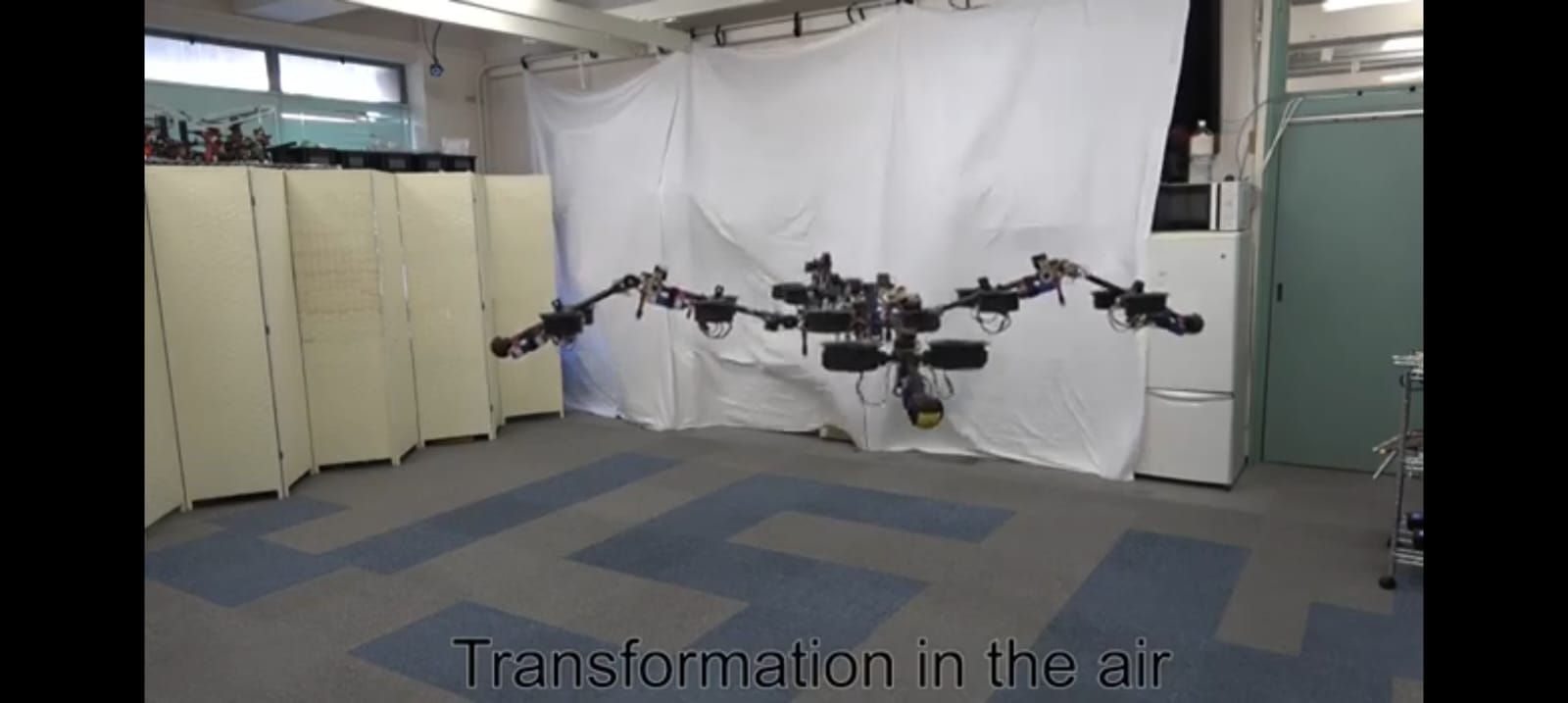A video of a unique robot has appeared online, showing a spider-shaped machine moving its four legs with rotary propellers instead of mechanical controls on the ground and then using the same to fly.
Multi-modal robots are designed to operate in more than one environment and terrain, in this case, land and air. Both civilian and military sectors require drones to have the capability of operating in different terrains for everything ranging from emergency rescues to clandestine surveillance.
A previous report in EurAsian Times talked about a bionic bird drone being developed in China that broke its airborne flight time record and was stated to have both bio-conservation and military applications. The University of New Mexico scientists made similar achievements.
But the Spherically Vectorable and Distributed Rotors-Assisted Air-Ground Amphibious Quadruped Robot (SPIDAR) only shares its animal-like movement feature. The limbs are moved not by electro-mechanical force but by turnable propellers that change direction during various stages.
For flight, the ‘spider legs’ flay out, and the rotors simply position themselves for the robot to take off like a quadcopter. It is unclear if the robot was created on a specific request by a private or a government agency or is an internal technology demonstration (TD) project.
Walk With Propellers Meant For Flying
According to the message accompanying a leading social media page that shares information about robotic systems, the SPIDAR was created by a team from the University of Tokyo and can both move on the ground and fly. “At the same time, it weighs as much as 33 pounds — almost 15 kilograms.”
A video of a unique robot has appeared online, showing a spider-shaped machine moving its four legs with rotary propellers instead of mechanical controls on the ground and then using the same to fly. pic.twitter.com/0EFcFok8Ki
— EurAsian Times (@THEEURASIATIMES) October 18, 2023
This is not surprising given the large number of rotors — four in horizontal pairs of two on one ‘leg’ each, totaling 16 — with their motors and possibly independent power sources. The video on one leading Telegram group shows that the SPIDAR is fully electrically powered.
“The drone has special controllable dual motors and propellers instead of standard drives, allowing it to take to the skies with just a button press. When walking, it uses servos paired with the previously mentioned motors on his limbs. The servos and motors must be synchronized to coordinate the movement of the legs properly.”
Video Shows Drone In Movement
As seen in the video, like a spider, the robot has to coordinate the lifting and descent of each of its limbs to attain movement — or at least an action that takes it from ‘point A’ to ‘point B.’ As the video shows, the four motors on each leg must turn downwards for the air thrust to lift the SPIDAR’s center section.
The two rotors on the upper and lower half of each leg alternatively turn forward and downward, synchronizing with the rotors on the other legs to support the movement. The video is then speeded up four times and shows the robot crossing a distance of nearly a foot, indicating the prolonged movement speed owing to the unorthodox system that powers the limbs.
The robot then stops, and the center sets itself on the ground. Soon, all the motors on the legs stop, and the SPIDAR takes off like a quadcopter, with the legs ultimately spreading out flat.

Drone System At Testing Stage
The system is experimental and far from operationalized for any actual purpose. The unusual power system will take time to correct and technically perfect before a full-scale working model is produced.
“The prototype in the video can walk for up to 18 minutes and fly for 9 minutes. Manufacturers promise to improve it by making the legs more tenacious — so the spider drone can climb walls and lift several loads at once,” said the post.
A technical paper by the team found online described the system as an “air-ground quadruped robot with multimodal locomotion capability.” The paper was written by Moju Zhao, Tomoki Anzai, and Takuszmi Nishio in January 2023.
- The author can be reached at satamp@gmail.com
- Follow EurAsian Times on Google News




